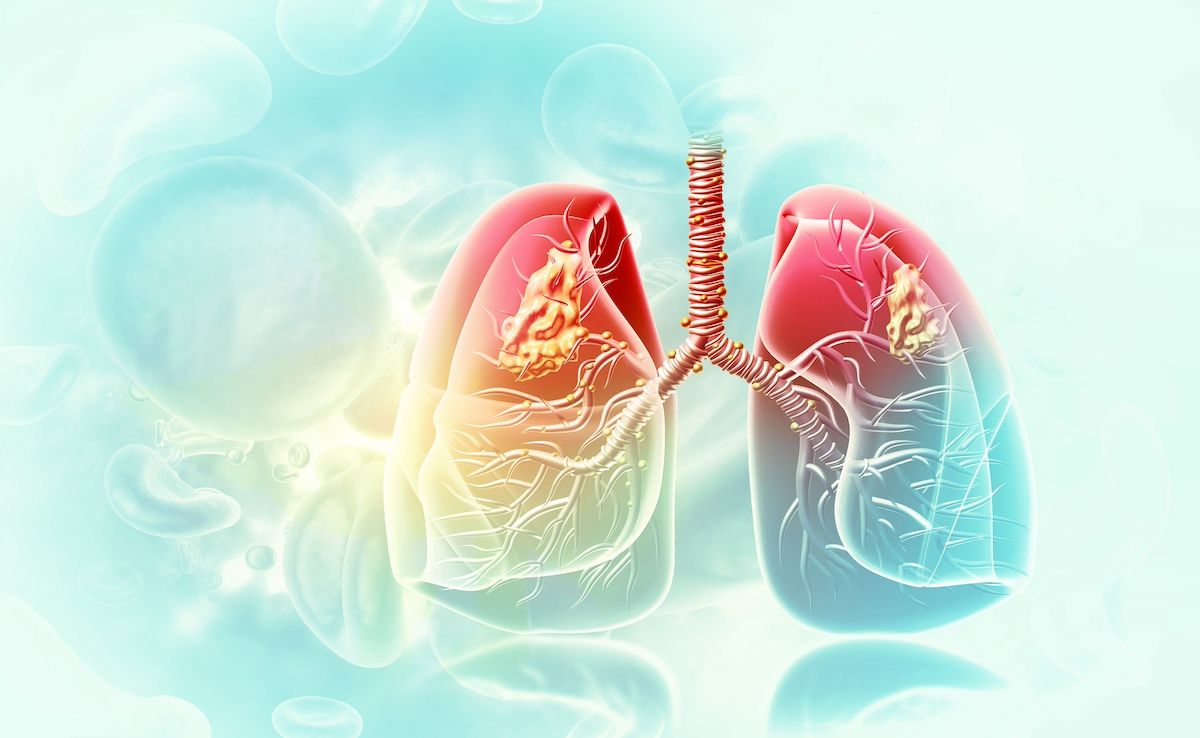- Center on Health Equity & Access
- Clinical
- Health Care Cost
- Health Care Delivery
- Insurance
- Policy
- Technology
- Value-Based Care
Challenging the Prognostic Role of NLR in SCLC in the Era of Immunotherapy
Elevated NLR may no longer predict poor survival outcomes in patients with small cell lung cancer (SCLC) receiving immunotherapy, according to new research.
Elevated neutrophil-to-lymphocyte ratio (NLR)—a known marker of systemic inflammation and poor prognosis in cancer—may have lost its prognostic relevance in small cell lung cancer (SCLC) in the era of immunotherapy, according to a retrospective, single-center analysis presented at the 2025 American Society of Clinical Oncology annual meeting.1
Historically, elevated NLR (defined as ≥4) has been associated with worse survival outcomes in SCLC, particularly in patients with extensive-stage (ES-SCLC) disease. However, this association was primarily derived from data collected prior to the integration of immune checkpoint inhibitors into frontline SCLC treatment.2 Given the transformative impact of immunotherapy, the current study aimed to determine whether NLR remains a predictor of survival outcomes in modern clinical practice.1
While elevated NLR previously served as a marker of aggressive disease and poor prognosis in SCLC, its prognostic relevance appears to diminish in the context of immunotherapy-based treatment regimens. | Image credit: Crystal light - stock.adobe.com

“Previous studies have demonstrated inferior outcomes in patients with elevated neutrophil-to-lymphocyte ratios (NLR) in small cell lung cancer (SCLC), the authors noted. "However, most of these studies were before the introduction of immunotherapy; the results were mixed, and it remains uncertain whether NLR possesses prognostic relevance even in the current era of immunotherapy.”
The study analyzed 2 separate cohorts of patients diagnosed with SCLC at a single institution: one representing the pre-immunotherapy era (July 2010 to June 2013), and another representing the immunotherapy era (July 2020 to June 2023). Patients were stratified by NLR into high (≥4) and low (<4) groups, and outcomes were evaluated using Kaplan-Meier survival analysis. The median overall survival (OS) for all patients was 12.9 months. For those with limited-stage disease, the median OS was not reached, whereas those with ES-SCLC had a median OS of 10.5 months (P < .001).
In the pre-immunotherapy cohort, 80 patients were identified, 45% of whom had high NLR. ES-SCLC was present in nearly 69%, and all patients had a history of smoking. In this cohort, a high NLR was significantly associated with worse OS. The median OS was 8.7 months in the high-NLR group compared with 11.2 months in the low-NLR group (P = .01).
In contrast, the immunotherapy-era cohort included 90 patients, with a median age of 64.2 years and a male predominance (53.3%). Nearly all (96.7%) had a history of smoking, and 73.3% had ES-SCLC. Fifty-one percent of patients had high NLR in this cohort, with a median OS of 12.5 months vs 16.7 months in those with low NLR (P = .35). Among ES-SCLC patients specifically, NLR did not influence OS (P = .37) or progression-free survival (PFS) with immunotherapy (P = .60). Additionally, NLR values measured on the day of immunotherapy initiation had no significant impact on PFS (P = .21) or OS (P = .27).
The study’s findings suggest that while elevated NLR previously served as a marker of aggressive disease and poor prognosis in SCLC, its prognostic relevance appears to diminish in the context of immunotherapy-based treatment regimens. This may reflect the ability of immune checkpoint inhibitors to counteract the effects of cancer-related inflammation and mitigate the impact of systemic immunologic dysregulation.3
Notably, patients with elevated NLR were still more likely to have ES-SCLC, indicating that high NLR continues to correlate with tumor burden and inflammatory state.1 However, this no longer translated into poorer outcomes with immunotherapy, raising important questions about the evolving prognostic landscape in SCLC.
“This study highlights the need for larger prospective studies to determine if traditional prognostic factors, like NLR, still hold prognostic relevance in the era of immunotherapy,” the authors concluded.
References
1. Lal B, Kumar N, Hoesley J, Wooldridge J, Arnaoutakis K. Prognostic significance of neutrophil-to-lymphocyte ratio in small cell lung cancer in the era of immunotherapy. Poster presented at: American Society of Clinical Oncologists Annual Meeting 2025; May 30 to June 3, 2025; Chicago, IL. https://meetings.asco.org/abstracts-presentations/249330
2. Yu Y, Qian L, Cui J. Value of neutrophil-to-lymphocyte ratio for predicting lung cancer prognosis: A meta-analysis of 7,219 patients. Mol Clin Oncol. 2017;7(3):498-506. doi:10.3892/mco.2017.1342
3. Adamo A, Frusteri C, Pilotto S, et al. Immune checkpoint blockade therapy mitigates systemic inflammation and affects cellular FLIP-expressing monocytic myeloid-derived suppressor cells in non-progressor non-small cell lung cancer patients. Oncoimmunology. 2023;12(1):2253644. doi:10.1080/2162402X.2023.22536
Exploring Racial, Ethnic Disparities in Cancer Care Prior Authorization Decisions
October 24th 2024On this episode of Managed Care Cast, we're talking with the author of a study published in the October 2024 issue of The American Journal of Managed Care® that explored prior authorization decisions in cancer care by race and ethnicity for commercially insured patients.
Listen
